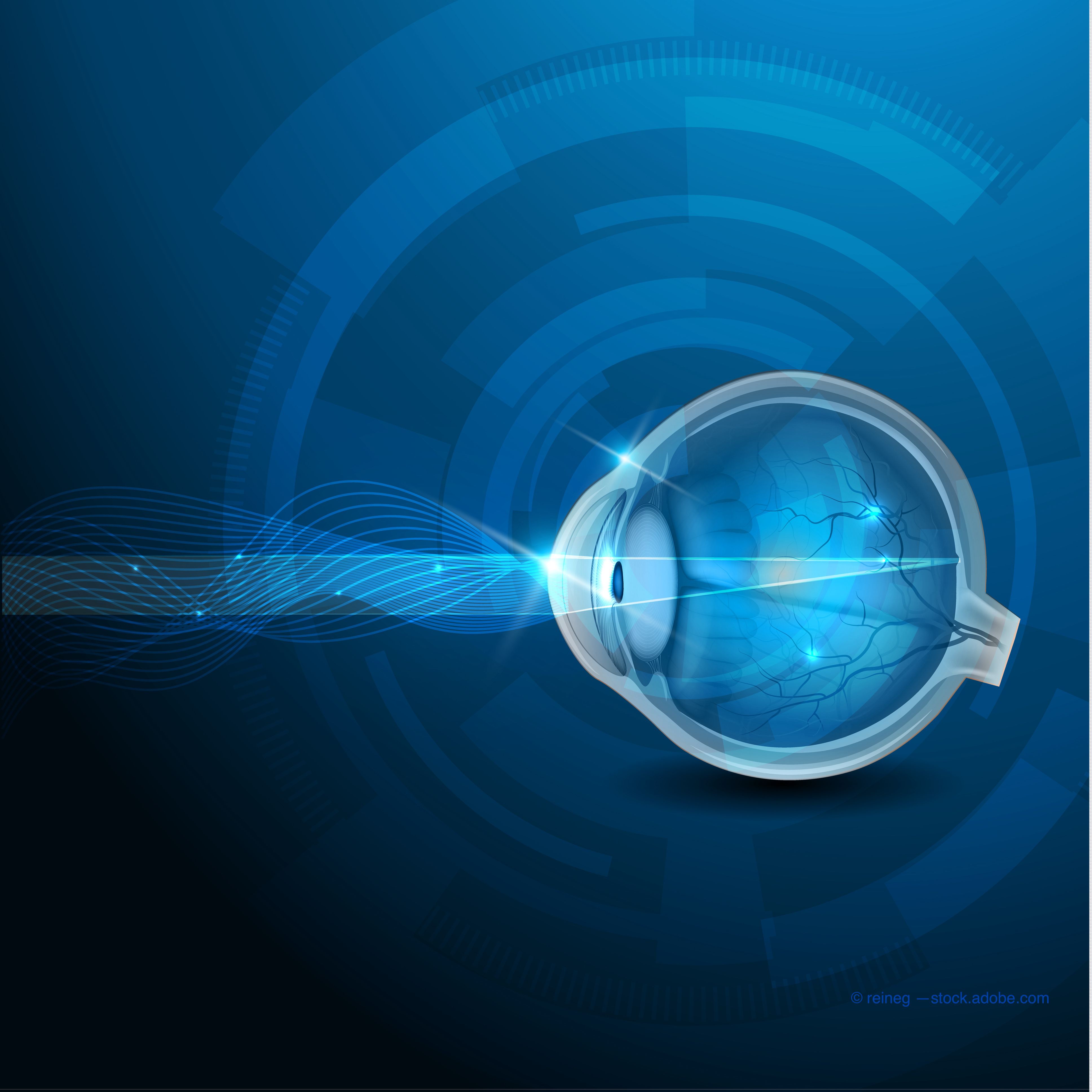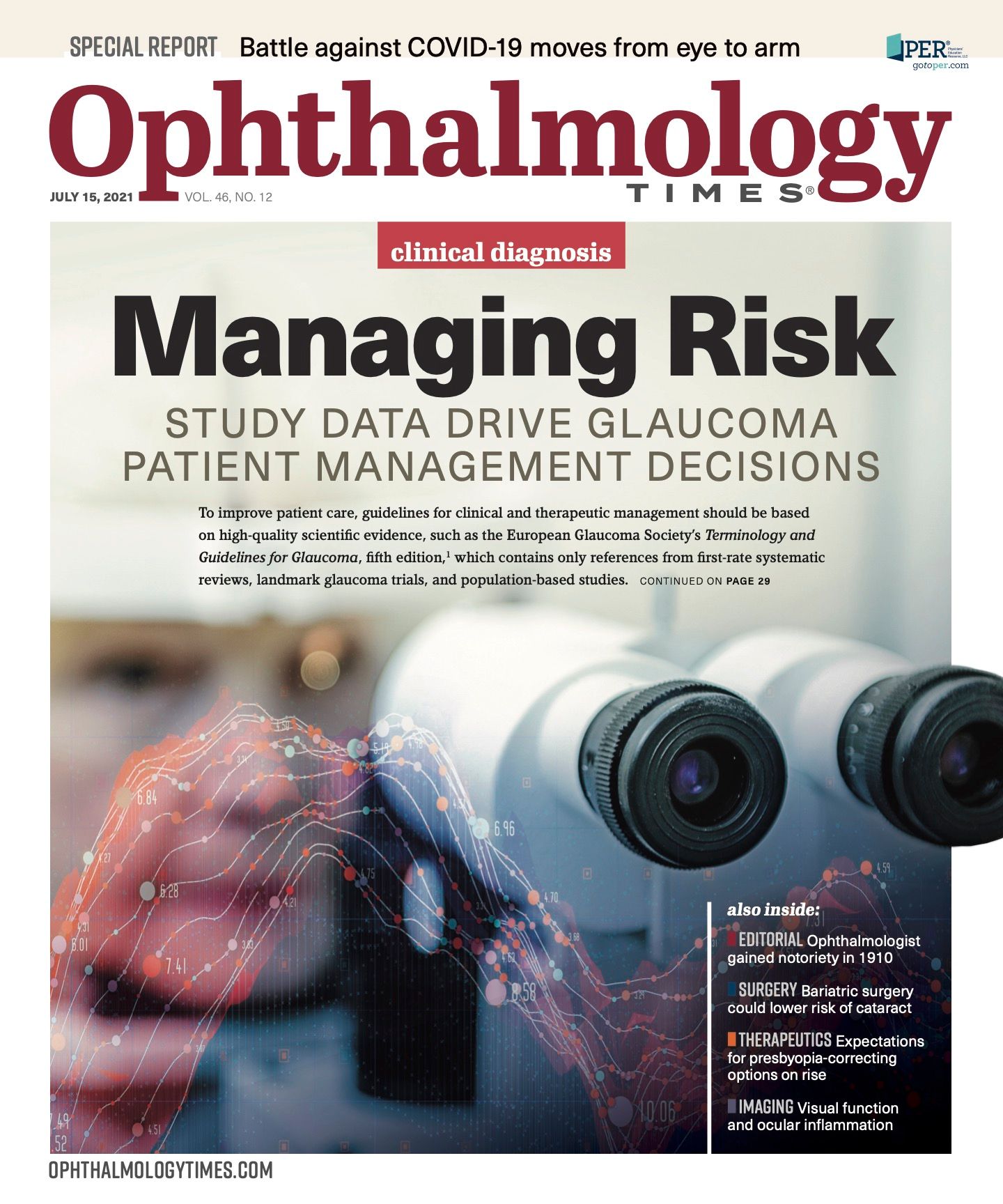Publication
Article
Digital Edition
The benefits of cryopreserved amniotic membrane during COVID-19
Author(s):
CAM’s regenerative healing means long-term relief and fewer visits to clinic.

Milner

Special to Ophthalmology Times®
Amidst the changing limitations placed on us by COVID-19 and the pressure to limit in-office patient visits, patients with severe ocular surface conditions continue to need our help.
Neurotrophic keratitis, persistent epithelial defects, recurrent erosion syndromes, stem cell dysfunction, corneal ulcers, and moderate to severe dry eye disease with corneal inflammation all require a physician’s care.
Because these emergent cases can spiral downward very quickly, we cannot just have a telemedicine visit and push back in-person exams for months—we need to see these patients in the office.
Related: Future looks promising for telemedicine
Cryopreserved amniotic membrane (CAM; Prokera; Bio-Tissue, Inc), a therapy I have used for patients with ocular surface defects for years, may have even more value in this environment: CAM lasts longer on the eye, decreasing the need for repeat office visits, and is often covered by insurance.
When we are choosing between dehydrated amniotic membrane or CAM, the indications are a good place to start.
Both are FDA approved for wound covering, but only CAM has been approved for its antiangiogenesis, antiscarring, and anti-inflammatory effects.
These effects support our COVID-19 environment goals for effective healing and limited recurrence.
Related: ‘Long COVID’ may be linked to nerve damage in the cornea
CAM in the COVID-19 environment
CAM has several advantages over other therapies for many corneal defects, and those advantages are particularly important now during the COVID-19 pandemic.
First, CAM carries less risk of hypoxia compared to dehydrated amniotic membrane, which requires a bandage contact lens that should be removed in 2 to 3 days to mitigate the risk of infection.
CAM is placed using an integrated ring that can stay on the eye a little longer, possibly allowing us to space out the visits with lower risk of hypoxia.
CAM’s second advantage is its potential ability to regenerate nerves and improve corneal sensation.1,2
If we can regenerate corneal nerves and corneal sensation improves, the eye benefits from the protective mechanisms of blinking, tearing, and epithelial healing.
As a result, the ocular surface is in a healthier state and there is less chance that the same problem will reoccur, potentially limiting the need to see the patient again weeks or months later.
Related: Strategies to address challenging ocular infections
Although it seems evident that COVID-19 is not going away anytime soon, patients with neurotrophic corneas or moderate dry eye disease, for example, may enjoy prolonged benefits from healing and restored ocular sensation, limiting the need to come back to the office.
For the treatment of stage 3 neurotrophic keratitis, a 2-layer CAM may prove to be an excellent choice because as the first membrane dissolves, the second layer on the eye provides prolonged coverage.
Based on several studies, the effects of one application of CAM can last 3 to 9 months or more.1-3
Some patients with neurotrophic corneas may benefit from the addition of cenegermin (Oxervate, Dompé US Inc) to promote nerve regeneration.
Additionally, for certain conditions in the acute phase, like Stevens-Johnson syndrome, chemical injuries, or toxic epidermal necrolysis, in addition to the persistent defects, there is also the risk of conjunctival scarring.
Related: Regeneration may help restore vision in retinal dystrophies
Using CAM with the plastic ring delivery system helps prevent symblepharon as well as promotes healing of the ocular surface.
An amniotic membrane alone or with a bandage contact lens does not provide this symblepharon ring.
Regenerative healing
The reason that CAM is so effective for persistent ocular surface defects is that it not only provides a covering, but it also delivers what I call the “fetal complex” of heavy chain-hyaluronic acid/pentraxin 3 complex.
All of these substances are found in inflammatory cascades in the body, but they’re only found together in fetal tissue and in placenta. In combination, this complex promotes regenerative healing.
The body’s natural response (adult healing) to an environmental insult is to form a scar, protecting the injury from additional problems caused by the environment, such as infection.
In regenerative healing, the goal is to return the tissue to its original state, promoting healing and preventing scar tissue and angiogenesis.
Cryopreservation conserves the fetal complex, but it may be lost in dehydration.4 It is the healing ability of this complex that sets CAM apart and makes it a good option for many ocular surface diseases.
An accessible choice
A final plus for CAM in the COVID-19 era is its potential financial benefit to patients. Some patients have lost their jobs or feel less financially secure.
As a result, they may be even more reluctant to spend money on multiple medications. CAM is covered by most insurances. If a physician can eliminate the need for some of the medications, that would be a clear benefit.
With fewer medications, patients’ treatment adherence would likely improve as well.
As we move through this crisis and beyond, we will continue to appreciate the benefits of CAM for these patients to improve corneal healing and their quality of life.
---
Mark S. Milner, MD
P: 561-630-7120
Milneris the director of cornea at Goldman Eye in Palm Beach Gardens, Florida, and an associate clinical professor of ophthalmology at Yale School of Medicine.
--
References
1. John T, Tighe S, Sheha H, et al. Corneal nerve regeneration after self-retained amniotic membrane in dry eye disease. J Ophthalmol. 2017;2017:6404918. doi:10.1155/2017/6404918
2. Morkin MI, Hamrah P. Efficacy of self-retained cryopreserved amniotic membrane for treatment of neuropathic corneal pain. OculSurf. 2018;16(1):132-138. doi:10.1016/j.jtos.2017.10.003
3. McDonald MB, Sheha H, Tighe S, et al. Treatment outcomes in the DRy Eye Amniotic Membrane (DREAM) study. ClinOphthalmol. 2018;12:677-681.doi:10.2147/OPTH.S162203
4. Cooke M, Tan EK, Mandrycky C, He H, O’Connell J, Tseng SCG. Comparison of cryopreserved amniotic membrane and umbilical cord tissue with dehydrated amniotic membrane/chorion tissue. J Wound Care. 2014;23(10):465-474, 476. doi:10.12968/jowc.2014.23.10.465

Newsletter
Don’t miss out—get Ophthalmology Times updates on the latest clinical advancements and expert interviews, straight to your inbox.





